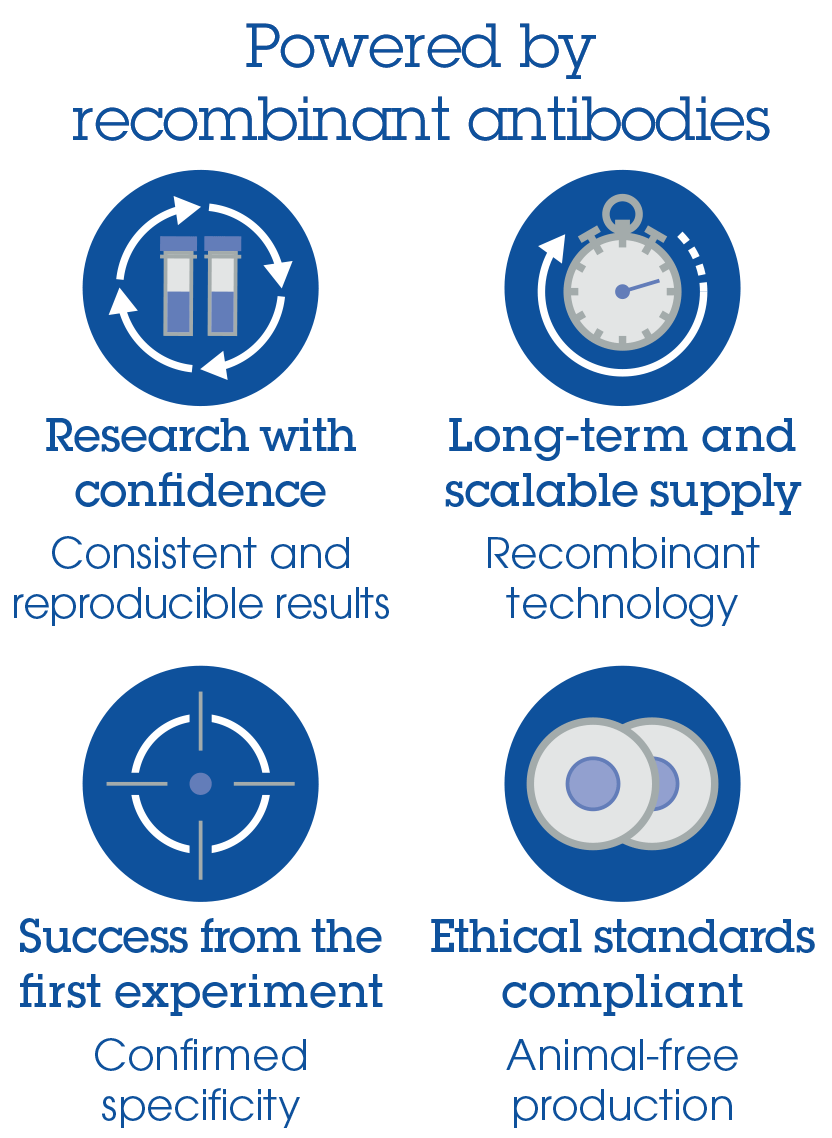Mouse mTOR Antibody Pair - BSA and Azide free (ab241756)
Key features and details
- Unconjugated capture and detector antibodies
- Adaptable to any antibody pair-based assay format
- Antibody concentration ~ 1 mg/ml
- BSA and azide free buffer - ready for conjugation
- Reacts with: Mouse
Overview
-
Product name
Mouse mTOR Antibody Pair - BSA and Azide free
See all mTOR kits -
Assay type
ELISA set -
Range
62.5 pg/ml - 4000 pg/ml -
Species reactivity
Reacts with: Mouse -
Product overview
The Antibody Pair can be used to quantify Mouse mTOR. BSA and Azide free antibody pairs include unconjugated capture and detector antibodies suitable for sandwich ELISAs. The antibodies are provided at an approximate concentration of 1 mg/ml as measured by the protein A280 method. The recommended antibody orientation is based on internal optimization for ELISA-based assays. Antibody orientation is assay dependent and needs to be optimized for each assay type. Both capture and detector antibodies are rabbit monoclonal antibodies delivering consistent, specific, and sensitive results.
For additional information on the performance of the antibody pair, see the equivalent SimpleStep ELISA® Kit (ab206311), which uses the same antibodies. However, due to differences in their formulation, this antibody pair cannot be used with the consumables provided with our SimpleStep ELISA Kits. Please note that the range provided for the pairs is only an estimation based on the performance of the related product using the same antibody pair. Performance of the antibody pair will depend on the specific characteristics of your assay. We guarantee the product works in sandwich ELISA, but we do not guarantee the sensitivity or dynamic range of the antibody pair in your assay.
Download SDS here.
-
Tested applications
Suitable for: Sandwich ELISAmore details -
Platform
Reagents
Properties
-
Storage instructions
Store at +4°C. Please refer to protocols. -
Carrier free
Yes -
Components 10 x 96 tests Mouse mTOR Capture Antibody (unconjugated) 1 x 100µg Mouse mTOR Detector Antibody (unconjugated) 1 x 100µg -
Research areas
-
Function
Kinase subunit of both mTORC1 and mTORC2, which regulates cell growth and survival in response to nutrient and hormonal signals. mTORC1 is activated in response to growth factors or amino-acids. Growth factor-stimulated mTORC1 activation involves AKT1-mediated phosphorylation of TSC1-TSC2, which leads to the activation of the RHEB GTPase that potently activates the protein kinase activity of mTORC1. Amino-acid-signaling to mTORC1 requires its relocalization to the lysosomes mediated by the Ragulator complex and the Rag GTPases. Activated mTORC1 up-regulates protein synthesis by phosphorylating key regulators of mRNA translation and ribosome synthesis. mTORC1 phosphorylates EIF4EBP1 and releases it from inhibiting the elongation initiation factor 4E (eiF4E). mTORC1 phosphorylates and activates S6K1 at 'Thr-421', which then promotes protein synthesis by phosphorylating PDCD4 and targeting it for degradation. Phosphorylates MAF1 leading to attenuation of its RNA polymerase III-repressive function. mTORC2 is also activated by growth. factors, but seems to be nutrient-insensitive. mTORC2 seems to function upstream of Rho GTPases to regulate the actin cytoskeleton, probably by activating one or more Rho-type guanine nucleotide exchange factors. mTORC2 promotes the serum-induced formation of stress-fibers or F-actin. mTORC2 plays a critical role in AKT1 'Ser-473' phosphorylation, which may facilitate the phosphorylation of the activation loop of AKT1 on 'Thr-308' by PDK1 which is a prerequisite for full activation. mTORC2 regulates the phosphorylation of SGK1 at 'Ser-422'. mTORC2 also modulates the phosphorylation of PRKCA on 'Ser-657'. -
Tissue specificity
Expressed in numerous tissues, with highest levels in testis. -
Sequence similarities
Belongs to the PI3/PI4-kinase family.
Contains 1 FAT domain.
Contains 1 FATC domain.
Contains 7 HEAT repeats.
Contains 1 PI3K/PI4K domain. -
Post-translational
modificationsAutophosphorylated; when part of mTORC1 or mTORC2. -
Cellular localization
Endoplasmic reticulum membrane. Golgi apparatus membrane. Mitochondrion outer membrane. Lysosome. Cytoplasm. Nucleus > PML body. Shuttles between cytoplasm and nucleus. Accumulates in the nucleus in response to hypoxia (By similarity). Targeting to lysosomes depends on amino acid availability and RRAGA and RRAGB. - Information by UniProt
-
Alternative names
- dJ576K7.1 (FK506 binding protein 12 rapamycin associated protein 1)
- FK506 binding protein 12 rapamycin associated protein 1
- FK506 binding protein 12 rapamycin associated protein 2
see all -
Database links
- Entrez Gene: 56717 Mouse
- SwissProt: Q9JLN9 Mouse
- Unigene: 21158 Mouse
Images
-
To learn more about the advantages of recombinant antibodies see here.









